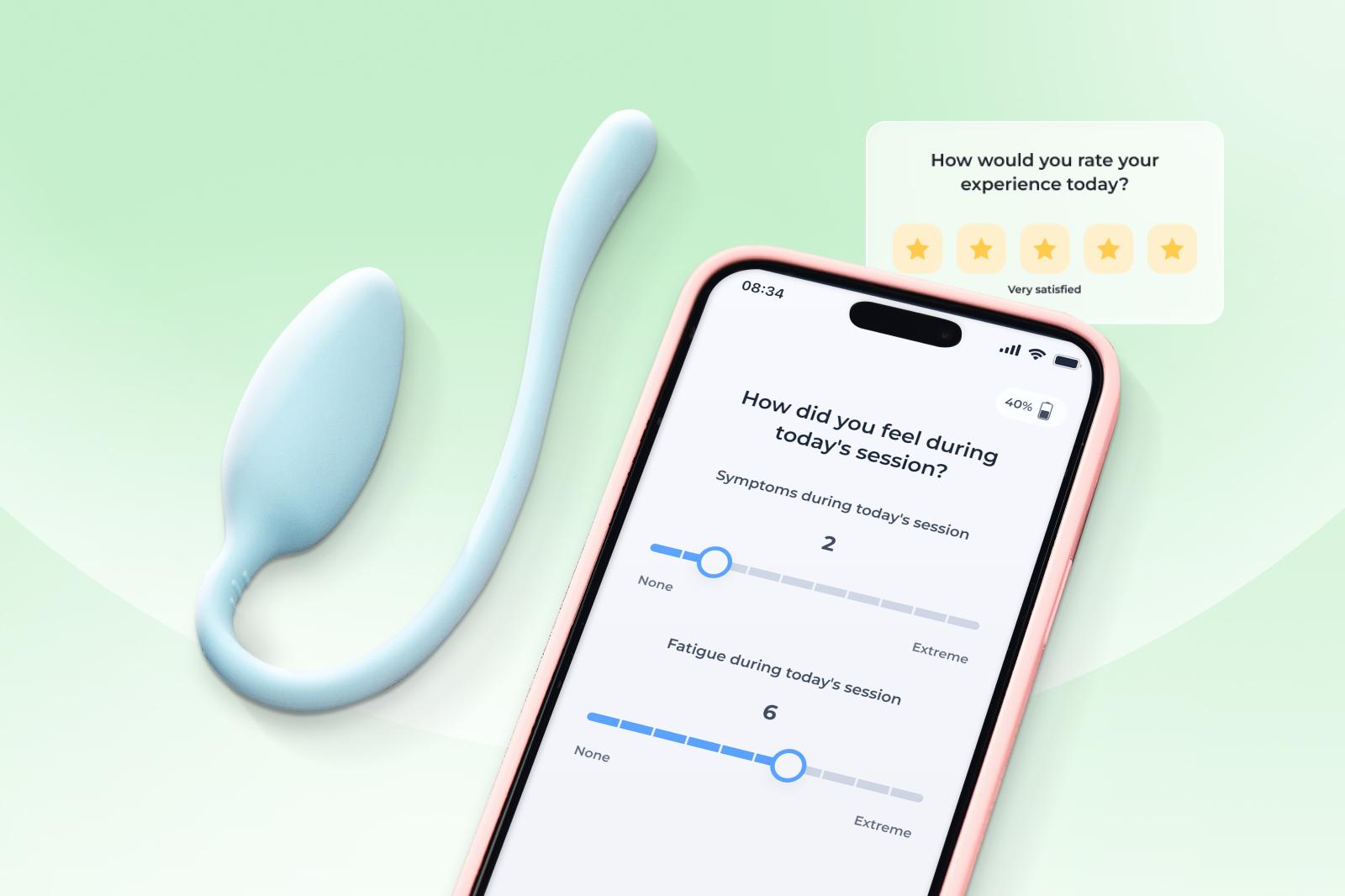Latest articles
Fresh healthcare insights

Harvard MBA Students Learn from Sword Health's Growth
This week, Sword Health had the opportunity to share our story and business vision with the students of Professor Regina Herzlinger’s “Innovating in Healthcare” course at Harvard Business School (HBS). Students in the class read and discussed a new case study, “Sword Health: Freeing the World From Pain,” about the trade-offs that all digital health companies need to face, whether to cut quality and costs to promote growth, or to keep standards high and grow at a more conservative pace. This makes Sword a useful case study for future healthcare leaders and entrepreneurs like those enrolled in Professor Herzlinger’s course. HBS chose Sword for this case study because the company is described with so many superlatives – Fastest growing company in this space, the most clinical research and patents, the highest engagement rates, the best ROI. In the face of so many decisions to be made, Sword decided to go the route of delivering the most clinically rigorous care.
February 10, 2023 • 2 min read

5 Stretches for a Frozen Shoulder
Stiff shoulders, restricted shoulder movement, or a sensation of a frozen shoulder can be painful, uncomfortable, and restrictive. If left untreated, chronic pain can develop. Finding relief from pain is critical, but almost always some form of movement is required to start working on recovery. For those who deal with shoulder pain, or any other musculoskeletal (MSK) pain, there can be a fear of movement or a tendency to avoid expected pain. Sometimes we need to embrace "low pain" and start the shoulder moving again, and the following shoulder stretches can help you recover.
January 16, 2023 • 7 min read

Solving the Epidemic of Unnecessary Surgery
For decades, the U.S. healthcare system has been burdened by medical overtreatment. Every year, millions of Americans with chronic pain undergo tests and procedures which don’t lead to healthier outcomes. This invasive approach pushes them toward complications and spiraling medical expenses. In my role as head of surgery at the Hartford Medical Center and as Chief Medical Officer at Sword Health, this is my mission: to help people find the best, least-invasive way to lead full, active, happy lives. Even physicians acknowledge the problem. A landmark survey of board-certified doctors found that 64.7% believe that at least 15–30% of medical care is unnecessary. The issue is most problematic when it comes to unnecessary surgery. The risks of surgery are already great so operating unnecessarily can be even more devastating. This leads to hospital readmissions, post-surgical pain and injury, and even death. This is not a new problem. As far back as the 1950s, Dr. Paul Hawley, the director of the American College of Surgeons, warned that “the public would be shocked if it knew the amount of unnecessary surgery performed.”
October 27, 2022 • 7 min read

How to combat the dangers of inactivity
Musculoskeletal (MSK) pain is a fact of life, especially for those who work at a desk, or are of advanced age. Your joints are critical to movement. When those joints are stressed, overused, or injured, you experience any level of MSK pain, whether long term (chronic), or short term (acute). Strain is not the only offender of MSK injury. We understand that backs ache, shoulders hurt, and knees break down as a result of overuse. However, studies show that lack of movement may be the biggest culprit of MSK pain. In the last 20 years, MSK pain has become steadily more prevalent across North America and Europe. Back and shoulder pain is at an all time high. Surgeries continue to increase, despite that outcomes aren’t improving. Yet, over the last 50 (and even 20) years, the average adult is less engaged in daily, active movement. If we’re moving our bodies less, how can we be in more pain? For many of us, working from home means we’re moving less with no commute, no in-person meetings, and less socializing while walking around the office or its surrounds. We are often bound to chairs for long hours and live in a dominantly virtual world.
October 13, 2022 • 8 min read

Benefits of Active Movement
Since founding, our mission has always been to give people access to a life that’s free from pain. Underlying this mission is the knowledge that living is moving: when something stops moving, it dies. It’s in our human DNA to run, jump, and climb, all for the sake of survival. Thankfully, we no longer outrun predators on a daily basis to survive, but the differences in today’s human body are stark — and lack of active movement is to blame. Other behaviors follow, paving the way to poor diets, little exercise, and the onset of chronic illness. The obesity epidemic has a grip on the world. Conditions like heart disease, diabetes, chronic pain, and cancer are on a steep incline, each of these illnesses exacerbated by a sedentary lifestyle. Today, the average person in the United States or Europe is less active than even fifty years ago. This is a human crisis. COVID-19 has shaped the modern office — for better and for worse. Nearly two years after the pandemic, 6 in 10 Americans work from home, and this number is growing. As more and more people move their offices to their bedrooms, daily, regular movement is harder to come by.
October 6, 2022 • 5 min read

Opioids, Racial Disparities, and MSK Pain
We at Sword Health are committed, collectively and individually, to freeing the world from pain. But doing so is more than simply making pain disappear. With hundreds of thousands of lives lost, it’s up to us to understand the entire ecosystem of pain and take action. In the 1990s, the medical community pushed a new way of thinking about healthcare: to consider pain the "fifth vital sign." A movement followed that focused on eliminating pain — fast. As with any "vital sign" (temperature, heart rate, breathing, and blood pressure), physicians often take a two-pronged approach to treatment: medication for short-term intervention, and lifestyle changes for long term health.
August 16, 2022 • 6 min read

Hobbies and Mental Health: The Science Behind It
In our busy lives, finding time for hobbies can seem like a luxury. However, engaging in hobbies such as playing chess, doing puzzles, painting, photography, reading, gardening, knitting - or anything else that brings you pleasure and relaxation - can significantly enhance mental health. This article explores the science behind how dedicating time to hobbies can positively impact mental well-being. The benefits of hobbies on mental health are rooted in several physiological and psychological mechanisms: Stress Reduction: Engaging in hobbies can lower cortisol levels, the hormone associated with stress. When you immerse yourself in an enjoyable activity, the brain shifts focus away from stressors, providing a mental break and promoting relaxation. Activities like painting or reading can induce a state of flow, where you lose track of time and become fully absorbed, further reducing stress.
August 16, 2022 • 3 min read

Explained: The Role of Cognitive Behavioral Therapy in MSK care
If you’ve been following our posts, you’ll have learned that mental and physical health are inseparable, and that the brain is just as involved in physical pain as the body is. We’ve explored the causal links between pain, depression and anxiety, and we’ve discussed the impact of fear on your ability to heal. That’s why in order to be truly effective, musculoskeletal (MSK) treatments need to address both body and mind. At Sword, our holistic program combines therapeutic exercise to strengthen the body, with education and behavioral coaching to strengthen the mind.
May 4, 2022 • 8 min read

First digital MSK company with clinical validation for shoulder pain care
NEW YORK, NY (March 31, 2022) — SWORD Health, the digital musculoskeletal (MSK) solution on the market with highest clinical excellence, released clinical study results that shared significant improvement in health-related outcomes for patients with chronic shoulder pain. The study, published in the Journal of Pain Research, focused on clinical outcomes in members going through SWORD’s care programs for chronic shoulder pain. It is the first real-world study reporting the results of multimodal digital MSK care programs for chronic shoulder conditions. Shoulder pain (SP) has a lifetime prevalence of nearly 70% and is therefore one of the most common musculoskeletal (MSK) complaints in primary care. Importantly, after a first episode of shoulder pain, about 50% of cases become chronic, making SP one of the most prevalent causes of chronic MSK pain.
March 30, 2022 • 4 min read

New Study Validates Sword Health as the Market Leader in Both Cost Savings and Clinical Outcomes
We are proud to be the first and only musculoskeletal (MSK) care provider to have obtained both Level 1 and Level 2 certification from Validation Institute. This reinforces Sword’s industry leadership for high-quality musculoskeletal care both in terms of clinical results and ROI. Sword is currently the fastest growing, most clinical, and best value in MSK care available anywhere in the world. Validation Institute’s Level 1 validation describes medical cost savings compared to a baseline of traditional care. Sword’s validated savings are the largest of any digital MSK solution. On average, Sword delivers a savings per member per year of $3,177 — significantly greater savings than our nearest competitor. For our Fortune 100 customers, this quickly translates into millions of dollars saved every year. We also have the industry's highest independently validated ROI of 3.2:1, a number unmatched by any digital MSK solution.
October 20, 2021 • 4 min read

Ask a PT: when is the best time to do my exercises?
Before I joined Sword Health, I worked in brick-and-mortar clinics. I never worked weekends, and rarely worked past 6 pm. My schedule was great...for me. But for my patients, it was a real challenge. Attending a physical therapy appointment might require leaving work early or slipping out at lunch. Even patients with more flexible schedules would sometimes lament about finding childcare or arranging transportation. A thirty-minute appointment could easily take an hour or even 90 minutes once travel was taken into account. When I was in a clinic, the “best” time for a patient to do their exercises was the time that worked for me, not for them. Sword's virtual model gives our members the power to do their exercises when AND where it's most convenient for them. Now that I work remotely for Sword, I’m able to help our members figure out the best time to do their exercises at home. Now, when my members ask me when they should do their exercises, I tell them - the best time is when you’ll actually do them!
February 11, 2021 • 6 min read

Ask a PT: How do I stand up to back pain?
Every day and every week, millions of people around the world have to stand in line for prolonged periods. In some places, people have to waited in line for several hours. It might be a queue for tickets, maybe a line at the airport, you might even by waiting to vote. Similarly, hundreds of millions of people are sitting at a desk for hours a day, staying sedentary while working at a laptop or desktop computer. If you were one of those people, you may have noticed some pain in your low back. When we stand or sit for long periods of time without movement, our muscles are working to maintain that position. The stress on some of our structures is particularly different when you’re standing. But what’s really to blame for the pain is the lack of movement. It’s not the fact that you’re sitting or standing that’s causing the pain. It’s the fact that you’re still.
November 2, 2020 • 5 min read
For employers
Workplace health advice
How Digital Physical Therapy Improves Employee Retention
Did you know that fear of pain can be more disabling than pain itself? Chronic pain and employee turnover prevention are critically linked, but with the right MSK benefits coverage, employers can help their team members recover from pain to increase workplace productivity. Nearly 28% of people in the workplace will take leave for MSK pain over the course of a year. Patients who suffer the two most common conditions of low back and neck pain have an average return to work of 7 days. Overall, MSK conditions are responsible for 44 missed work days each year on average.
October 24, 2025 • 6 min read
How to evaluate and select the best digital MSK vendors
Musculoskeletal (MSK) disorders are one of the most expensive and under-addressed cost centers facing U.S. healthcare providers. MSK disorders affect 1 in 2 Americans and cost over $190 billion per year, more than heart disease, cancer, or mental health conditions. For employers and health plans, MSK claims are often among the top 3 cost drivers. And for members, chronic pain reduces quality of life, drives absenteeism, and often leads to costly downstream interventions. That’s why digital MSK solutions have surged in popularity. The promise is compelling: better access, which drives stronger engagement, delivers better outcomes, and therefore lowers overall healthcare costs.
October 24, 2025 • 6 min read
Reduce MSK costs with more effective digital MSK care plans
You’ve likely seen numerous digital health solutions that promise to lower medical spend. You’ve probably zeroed in on the top conditions with significant digital solutions in the marketplace: musculoskeletal (MSK), mental health, and diabetes. For most companies, prioritizing MSK care over other digital health solutions will drive the biggest benefits for your employees and your bottom line when it comes to savings. Given the multitude of vendors, platforms, and solutions available, prioritization can be a daunting task. How do you choose from among the thousands of digital health tools? What combination of condition focus and solution selection will drive the best outcomes for your population and the biggest return for your business?
October 24, 2025 • 5 min read
Tackling the #1 driver of employers’ health costs: MSK
The phrase ‘musculoskeletal disorder’ may not ring a bell — but the feeling might. The term refers to any type of pain in the muscles or joints, from chronic pain to injuries to post-surgical pain. Many of us have suffered from a musculoskeletal (MSK) issue at some point in our lives. In fact, one in two Americans is struggling with an MSK condition right now. And it’s causing economic ripples, especially in the workplace.
January 20, 2020 • 6 min read
Expert guidance
From the experts: Ask a physical therapist

Ask a PT: when is the best time to do my exercises?
Before I joined Sword Health, I worked in brick-and-mortar clinics. I never worked weekends, and rarely worked past 6 pm. My schedule was great...for me. But for my patients, it was a real challenge. Attending a physical therapy appointment might require leaving work early or slipping out at lunch. Even patients with more flexible schedules would sometimes lament about finding childcare or arranging transportation. A thirty-minute appointment could easily take an hour or even 90 minutes once travel was taken into account. When I was in a clinic, the “best” time for a patient to do their exercises was the time that worked for me, not for them. Sword's virtual model gives our members the power to do their exercises when AND where it's most convenient for them. Now that I work remotely for Sword, I’m able to help our members figure out the best time to do their exercises at home. Now, when my members ask me when they should do their exercises, I tell them - the best time is when you’ll actually do them!
February 11, 2021 • 6 min read

Ask a PT: Does walking really help with pain?
If you’ve ever stood on the sidelines of a sporting event, you’ve likely witnessed many falls, trips and tackles. Whether the players are small children or professional athletes, the advice from the coach may have simply been to “walk it off.” While that is not always the best solution after an acute injury, walking can be a really effective way to manage chronic pain. Motion is lotion. Movement increases blood flow, which brings nutrients to our tissues. It also helps those that don’t have blood flow, like cartilage. Cartilage lines our joints, absorbing impact. It’s surrounded by a liquid which provides it with nutrients, flowing in and out of it like a sponge. Exercise, like walking, causes loading that fills and squeezes that sponge, particularly in the joints of our legs and spine.
August 13, 2020 • 5 min read

Ask a PT: What Is Causing My Shoulder Pain?
When your shoulder hurts, it can be difficult to tell exactly what’s gone wrong. You’ve probably heard of pinched nerves and rotator cuff tears. Perhaps you’ve also heard about shoulders being ‘impinged’ or ‘frozen.’ It’s not easy to keep these various shoulder conditions straight, especially when they all cause similar pain symptoms. The first step towards fixing a problem is identifying it. This article, written by a team of Doctors of Physical Therapy, is designed to help you figure out what’s causing your shoulder pain — so you can begin the process of healing it. We will dive into the five most common causes of shoulder pain and how to differentiate them. Cervical refers to the neck, and radiculopathy is pain that radiates to another body part. Hence, cervical radiculopathy: a pinched nerve in the neck, which can cause radiating pain affecting the shoulder. It occurs when the cervical spine becomes damaged due to sudden injury or degeneration over time, and squeezes or puts pressure on a nearby nerve.
November 1, 2023 • 6 min read
Healthcare contributors
Meet Sword's expert authors

Dr. Vijay Yanamadala, MD, MBA, FAANS
Chief Medical Officer at Sword Health

Dr. Fernando Correia, M.D.
SVP Clinical & Regulatory Affairs at Sword Health

Megan Hill, PT, DPT
Director, Clinical Specialists

Morgan Hollis, MS, RDN
Head of Clinical Strategy, Sword Move

Jennesa Atherton
Head of Clinical Affairs, Sword Bloom

Liz Santo
Senior Clinical Program Manager, Sword Bloom ·





